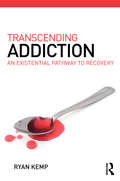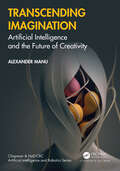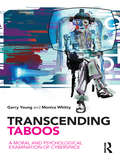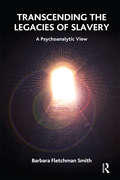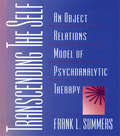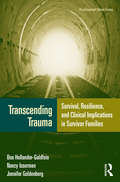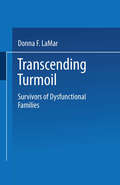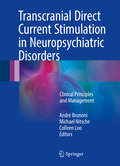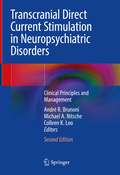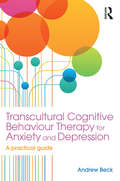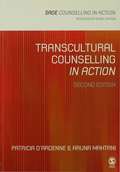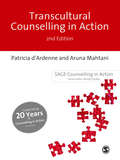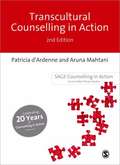- Table View
- List View
Transcending Addiction: An Existential Pathway to Recovery
by Ryan KempAddiction is often thought about in terms of cause, be that brain chemistry, attachment patterns or cognitive schemas. But this does not allow an understanding of what addiction "is". It does not illuminate how addiction is lived. A phenomenology of addiction reveals that addiction is characterised by an intolerance of pain, a pursuit of pleasure, immediacy, technocratic solutions, alienation, ambiguity and is drenched in deception. These are its individual clinical manifestations, but this is also the way life, in this century, is lived. The addict is thus the ultimate 21st century subject, consuming without end, intolerant of emotion and unable to grasp their own limitations. Rather than embraced, these subjects act as a denied symptom, haunting late capitalism and exposing the vampire-like nature of our culture. As such, these subjects need to be treated not just as individuals who have "gone too far", but as victims of the political agenda shaping our lives. Thus the heart of the book is a description of addiction deepened by existential-phenomenological theory. This description is then used to understand the historical emergence of addiction, its socio-political manifestation and also the crucial issue of how to clinically treat the addict-subject.
Transcending Imagination: Artificial Intelligence and the Future of Creativity (Chapman & Hall/CRC Artificial Intelligence and Robotics Series)
by Alexander ManuImagine a world where the boundaries of creativity are not only stretched but redefined. This book serves as your guide to this new frontier, engaging general readers, tech enthusiasts, and creatives alike in the captivating interplay between human ingenuity and artificial intelligence (AI).Journey through the ground-breaking advancements in AI as they intersect with art, design, entertainment, and education. Discover how AI’s power to analyze and understand language can be harnessed to generate breathtaking visuals from mere text descriptions—a process known as text-conditional image generation. But this book goes beyond just showcasing AI’s capabilities: it delves into its transformative effects on the creative process itself. How will artists and designers adapt to a world where they co-create with machines? What are the implications of AI-generated art in educational settings? This book tackles these questions head on, offering a comprehensive view of the changing landscape of creativity.At its core, this book challenges you to rethink what’s possible in the realm of artistic expression. Manu contends that as AI evolves, mastering the art of collaboration between human and machine will become essential. More than just a look into the future, Transcending Imagination: Artificial Intelligence and the Future of Creativity is a roadmap for artists, designers, and educators eager to navigate the uncharted territory of AI-augmented creativity. It is a must-read for anyone interested in how AI might redefine the realms of art, design, and education.
Transcending Imagination: Artificial Intelligence and the Future of Creativity (Chapman & Hall/CRC Artificial Intelligence and Robotics Series)
by Alexander ManuImagine a world where the boundaries of creativity are not only stretched but redefined. This book serves as your guide to this new frontier, engaging general readers, tech enthusiasts, and creatives alike in the captivating interplay between human ingenuity and artificial intelligence (AI).Journey through the ground-breaking advancements in AI as they intersect with art, design, entertainment, and education. Discover how AI’s power to analyze and understand language can be harnessed to generate breathtaking visuals from mere text descriptions—a process known as text-conditional image generation. But this book goes beyond just showcasing AI’s capabilities: it delves into its transformative effects on the creative process itself. How will artists and designers adapt to a world where they co-create with machines? What are the implications of AI-generated art in educational settings? This book tackles these questions head on, offering a comprehensive view of the changing landscape of creativity.At its core, this book challenges you to rethink what’s possible in the realm of artistic expression. Manu contends that as AI evolves, mastering the art of collaboration between human and machine will become essential. More than just a look into the future, Transcending Imagination: Artificial Intelligence and the Future of Creativity is a roadmap for artists, designers, and educators eager to navigate the uncharted territory of AI-augmented creativity. It is a must-read for anyone interested in how AI might redefine the realms of art, design, and education.
Transcending Shadows: Transforming Generational Wounds Through Three Generations
by Yao LinBased on interviews with three generations of three families, this book clarifies why the Cultural Revolution in China (1966–1976) had a uniquely traumatic impact on those affected, and shows the forms this trauma has taken in the lives of their second and third generations at both inter-subjective and intra-psychic levels.As a psychoanalytically oriented, qualitative study of the aftermath of the Cultural Revolution, this book investigates the role played by the beliefs, practices, and narratives which were ideologically formative during the Cultural Revolution, showing their role in the trans-generational transmission of trauma and how they still prevent a collective means of dealing with this trauma today. Instead of a collective remembering, a collective repression prevents the symbolization of memory on a societal level, and families serve as a space for this unresolved trauma. In this context, psychoanalysis is shown to be an effective way of interrupting and healing the transmission of trauma across the generations. Within a longer historical framework, this book also explores the Cultural Revolution as a defensive compulsory repetition of the traumas that China had previously experienced on a political and cultural level.Bearing witness to a personal process of transforming a wound into work, this first-person account offers in-depth understanding and guidance for psychotherapists and psychoanalysts engaged in interrupting and healing the trans-generational transmission of trauma.
Transcending Shadows: Transforming Generational Wounds Through Three Generations
by Yao LinBased on interviews with three generations of three families, this book clarifies why the Cultural Revolution in China (1966–1976) had a uniquely traumatic impact on those affected, and shows the forms this trauma has taken in the lives of their second and third generations at both inter-subjective and intra-psychic levels.As a psychoanalytically oriented, qualitative study of the aftermath of the Cultural Revolution, this book investigates the role played by the beliefs, practices, and narratives which were ideologically formative during the Cultural Revolution, showing their role in the trans-generational transmission of trauma and how they still prevent a collective means of dealing with this trauma today. Instead of a collective remembering, a collective repression prevents the symbolization of memory on a societal level, and families serve as a space for this unresolved trauma. In this context, psychoanalysis is shown to be an effective way of interrupting and healing the transmission of trauma across the generations. Within a longer historical framework, this book also explores the Cultural Revolution as a defensive compulsory repetition of the traumas that China had previously experienced on a political and cultural level.Bearing witness to a personal process of transforming a wound into work, this first-person account offers in-depth understanding and guidance for psychotherapists and psychoanalysts engaged in interrupting and healing the trans-generational transmission of trauma.
Transcending Taboos: A Moral and Psychological Examination of Cyberspace
by Garry Young Monica WhittyCyberspace is composed of a multitude of different spaces where users can represent themselves in many divergent ways. Why in a video game, is it more acceptable to murder or maim than rape? After all, in each case, it is only pixels that are being assaulted. This book avoids wrestling with the common question of whether the virtual violation of real-world taboos is right or wrong, and instead provides a theoretical framework that helps us understand why such distinctions are typically made, and explores the psychological impact of violating offline taboos within cyberspace. The authors discuss such online areas as: ‘Reality’ sites depicting taboo images Social networking websites and online chatrooms Online dating websites Video game content. This book considers whether there are some interactions that should not be permissible even virtually. It also examines how we might be able to cope with the potential moral freedoms afforded by cyberspace, and who might be vulnerable to such freedoms of action and representation within this virtual space. This book is ideal for researchers and students of internet psychology, philosophy and social policy, as well as therapists, those interested in computer science, law, media and communication studies
Transcending Taboos: A Moral and Psychological Examination of Cyberspace
by Garry Young Monica WhittyCyberspace is composed of a multitude of different spaces where users can represent themselves in many divergent ways. Why in a video game, is it more acceptable to murder or maim than rape? After all, in each case, it is only pixels that are being assaulted. This book avoids wrestling with the common question of whether the virtual violation of real-world taboos is right or wrong, and instead provides a theoretical framework that helps us understand why such distinctions are typically made, and explores the psychological impact of violating offline taboos within cyberspace. The authors discuss such online areas as: ‘Reality’ sites depicting taboo images Social networking websites and online chatrooms Online dating websites Video game content. This book considers whether there are some interactions that should not be permissible even virtually. It also examines how we might be able to cope with the potential moral freedoms afforded by cyberspace, and who might be vulnerable to such freedoms of action and representation within this virtual space. This book is ideal for researchers and students of internet psychology, philosophy and social policy, as well as therapists, those interested in computer science, law, media and communication studies
Transcending the Legacies of Slavery: A Psychoanalytic View
by Barbara Fletchman SmithThis book puts psychological trauma at its centre. Using psychoanalysis, it assesses what was lost, how it was lost and how the loss is compulsively repeated over generations. There is a conceptualization of this trauma as circular. Such a situation makes it stubbornly persistent. It is suggested that central to the system of slavery was the separating out of procreation from maternity and paternity. This was achieved through the particular cruelties of separating couples at the first sign of loving interest in each other; and separating infants from their mothers. Cruelty disturbed the natural flow of events in the mind and disturbed the approach to and the resolution of the Oedipus Complex conflict. This is traced through the way a new kind of family developed in the Caribbean and elsewhere where slavery remained for hundreds of years.
Transcending the Self: An Object Relations Model of Psychoanalytic Therapy
by Frank SummersDespite the popularity of object relations theories, these theories are often abstract, with the relation between theory and clinical technique left vague and unclear. Now, in Transcending the Self: An Object Relations Model of Psychoanalytic Therapy, Summers answers the need for an integrative object relations model that can be understood and applied by the clinician in the daily conduct of psychoanalytic therapy. Drawing on recent infancy research, developmental psychology, and the works of major theorists, including Bollas, Benjamin, Fairbairn, Guntrip, Kohut, and Winnicott, Summers melds diverse object-relational contributions into a coherent viewpoint with broad clinical applications. The object relations model emerges as a distinct amalgam of interpersonal/relational and interpretive perspectives. It is a model that can help patients undertake the most gratifying and treacherous of personality journeys: that aiming at the transcendence of the childhood self. Self-transcendence, in Summers' sense, means moving beyond the profound limitations of early life via the therapeutically mediated creation of a newly meaningful and authentic sense of self. Following two chapters that present the empirical and theoretical basis of the model, he launches into clinical applications by presenting the concept of therapeutic action that derives from the model. Then, in three successive chapters, he applies the model to patients traditionally conceptualized as borderline, narcissistic, and neurotic. He concludes with a chapter that addresses more broadly the craft of conducting psychoanalytic therapy. Filled with richly detailed case discussions, Transcending the Self provides practicing clinicians with a powerful demonstration of how psychoanalytic therapy informed by an object relations model can effect radical personality change. It is an outstanding example of integrative theorizing in the service of a real-world therapeutic approach.
Transcending the Self: An Object Relations Model of Psychoanalytic Therapy
by Frank SummersDespite the popularity of object relations theories, these theories are often abstract, with the relation between theory and clinical technique left vague and unclear. Now, in Transcending the Self: An Object Relations Model of Psychoanalytic Therapy, Summers answers the need for an integrative object relations model that can be understood and applied by the clinician in the daily conduct of psychoanalytic therapy. Drawing on recent infancy research, developmental psychology, and the works of major theorists, including Bollas, Benjamin, Fairbairn, Guntrip, Kohut, and Winnicott, Summers melds diverse object-relational contributions into a coherent viewpoint with broad clinical applications. The object relations model emerges as a distinct amalgam of interpersonal/relational and interpretive perspectives. It is a model that can help patients undertake the most gratifying and treacherous of personality journeys: that aiming at the transcendence of the childhood self. Self-transcendence, in Summers' sense, means moving beyond the profound limitations of early life via the therapeutically mediated creation of a newly meaningful and authentic sense of self. Following two chapters that present the empirical and theoretical basis of the model, he launches into clinical applications by presenting the concept of therapeutic action that derives from the model. Then, in three successive chapters, he applies the model to patients traditionally conceptualized as borderline, narcissistic, and neurotic. He concludes with a chapter that addresses more broadly the craft of conducting psychoanalytic therapy. Filled with richly detailed case discussions, Transcending the Self provides practicing clinicians with a powerful demonstration of how psychoanalytic therapy informed by an object relations model can effect radical personality change. It is an outstanding example of integrative theorizing in the service of a real-world therapeutic approach.
Transcending Trauma: Survival, Resilience, and Clinical Implications in Survivor Families (Psychosocial Stress Series)
by Bea Hollander-Goldfein Nancy Isserman Jennifer GoldenbergBased on twenty years of intense qualitative research, Transcending Trauma presents an integrated model of coping and adaptation after trauma that incorporates the best of recent work in the field with the expanded insights offered by Holocaust survivors. In the book’s vignettes and interview transcripts, survivors of a broad range of traumas will recognize their own challenges, and mental-health professionals will gain invaluable insight into the dominant themes both of Holocaust survivors and of trauma survivors more generally. Together, the authors and contributors Sheryl Perlmutter Bowen, Hannah Kliger, Lucy Raizman, Juliet Spitzer and Emilie Scherz Passow have transformed qualitative narrative analysis and framed for us a new and profound understanding of survivorship. Their study has illuminated universal aspects of the recovery from trauma, and Transcending Trauma makes a vital contribution to our understanding of how survivors find meaning after traumatic events. Accompanying Transcending Trauma is a CD of full-text life histories that documents the survivor experience. In seven comprehensive interviews, survivors paint a picture of life before and after war and trauma: their own feelings, beliefs, and personalities as well as those of their family; their struggles to deal with loss and suffering; and the ways in which their family relationships were able, in some cases, to mediate the transmission of trauma across generations and help the survivors transcend the trauma of their experiences.
Transcending Trauma: Survival, Resilience, and Clinical Implications in Survivor Families (Psychosocial Stress Series)
by Bea Hollander-Goldfein Nancy Isserman Jennifer GoldenbergBased on twenty years of intense qualitative research, Transcending Trauma presents an integrated model of coping and adaptation after trauma that incorporates the best of recent work in the field with the expanded insights offered by Holocaust survivors. In the book’s vignettes and interview transcripts, survivors of a broad range of traumas will recognize their own challenges, and mental-health professionals will gain invaluable insight into the dominant themes both of Holocaust survivors and of trauma survivors more generally. Together, the authors and contributors Sheryl Perlmutter Bowen, Hannah Kliger, Lucy Raizman, Juliet Spitzer and Emilie Scherz Passow have transformed qualitative narrative analysis and framed for us a new and profound understanding of survivorship. Their study has illuminated universal aspects of the recovery from trauma, and Transcending Trauma makes a vital contribution to our understanding of how survivors find meaning after traumatic events. Accompanying Transcending Trauma is a CD of full-text life histories that documents the survivor experience. In seven comprehensive interviews, survivors paint a picture of life before and after war and trauma: their own feelings, beliefs, and personalities as well as those of their family; their struggles to deal with loss and suffering; and the ways in which their family relationships were able, in some cases, to mediate the transmission of trauma across generations and help the survivors transcend the trauma of their experiences.
Transcortical Aphasias (Brain, Behaviour and Cognition)
by Marcelo L. BerthierTranscortical aphasias is the term used for syndromes in which the ability to repeat language is relatively preserved despite marked disturbances in other linguistic domains. Although there are a number of well-known reference texts on language disturbances after acquired brain damage that uncover the classical syndromes of aphasia (e.g. conduction aphasia) in a comprehensive fashion, this monograph is unique in its coverage of the different clinical, linguistic, and neuroanatomical aspects of transcortical aphasias.This book offers a comprehensive, contemporary and scholarly account of transcortical aphasias by combining valuable information upon cognitive neuropsychology, neuroimaging and functional localization of residual repetition and other language functions among patients with transcortical aphasias.The book covers: historical aspects; assessment of language deficits from a clinical and psycholinguistic perspective; clinical phenomenology, aetiology, neural substrates, and linguistic mechanisms underlying each of the three clinically established variants of transcortical aphasias (motor, sensory, and mixed); associated phenomena such as echolalia, completion phenomenon, automatic speech, and prosody; and neuroanatomical correlates including structural and functional neuroimaging. Each chapter presents the description of original and published cases which illustrate the various clinical patterns of transcortical aphasias.
Transcortical Aphasias (Brain, Behaviour and Cognition)
by Marcelo L. BerthierTranscortical aphasias is the term used for syndromes in which the ability to repeat language is relatively preserved despite marked disturbances in other linguistic domains. Although there are a number of well-known reference texts on language disturbances after acquired brain damage that uncover the classical syndromes of aphasia (e.g. conduction aphasia) in a comprehensive fashion, this monograph is unique in its coverage of the different clinical, linguistic, and neuroanatomical aspects of transcortical aphasias.This book offers a comprehensive, contemporary and scholarly account of transcortical aphasias by combining valuable information upon cognitive neuropsychology, neuroimaging and functional localization of residual repetition and other language functions among patients with transcortical aphasias.The book covers: historical aspects; assessment of language deficits from a clinical and psycholinguistic perspective; clinical phenomenology, aetiology, neural substrates, and linguistic mechanisms underlying each of the three clinically established variants of transcortical aphasias (motor, sensory, and mixed); associated phenomena such as echolalia, completion phenomenon, automatic speech, and prosody; and neuroanatomical correlates including structural and functional neuroimaging. Each chapter presents the description of original and published cases which illustrate the various clinical patterns of transcortical aphasias.
Transcranial Direct Current Stimulation in Neuropsychiatric Disorders: Clinical Principles and Management
by André Brunoni Michael Nitsche Colleen LooThe aim of this book is to provide a comprehensive review of the use of Transcranial Direct Current Stimulation (tDCS) in different psychiatric conditions. Here we review tDCS clinical studies employing different types of design (from single-session tDCS studies to randomized clinical trials) as well as studies evaluating the impact of tDCS in neurophysiological, behavioral and brain imaging outcomes. Although the understanding about physiological foundations and effectiveness of clinical therapies of psychiatric diseases has been considerably increased during the last decades, our knowledge is still limited, and consequently psychiatric diseases are still a major burden to the individual patient and society. Recently, interest in pathological alterations of neuroplasticity in psychiatric diseases as a critical condition for development, and amelioration of clinical symptoms increased, caused by the fact that new tools, such as functional imaging, and brain stimulation techniques do allow to monitor, and modulate these phenomena in humans. Especially non-invasive brain stimulation techniques evolved as an attractive potential new therapeutic tool. The interest in non-invasive brain stimulation has grown exponentially in the past 25 years, with the development of non-pharmacological, neuromodulatory techniques such as tDCS and repetitive transcranial magnetic stimulation (rTMS). TDCS, although even newer than rTMS, has attracted considerable attention in both basic and clinical research scenarios. In the context of clinical research, tDCS is being increasingly investigated as a novel treatment tool for several psychiatric disorders, such as major depression, schizophrenia and neurocognitive and substance abuse disorders. Transcranial Direct Current Stimulation in Neuropsychiatric Disorders – Clinical Principles and Management intends to serve as a practical guide on the field, attracting the interest of psychiatrists, neurologists and neuroscientists with little or no experience with tDCS, as well as those with a background on tDCS who want to increase their knowledge in any particular psychiatric condition.
Transcranial Direct Current Stimulation in Neuropsychiatric Disorders: Clinical Principles and Management
by Michael A. Nitsche André R. Brunoni Colleen K. LooThe 2nd edition of this book incorporates the tremendous clinical advances that have occurred in the field of transcranial direct current stimulation (tDCS) over the past 5 years. Since the 1st edition was published, the clinical use of tDCS has moved from its infancy, and is now in a thrilling new phase with numerous possibilities as well as challenges. tDCS is a technique that excels in terms of safety and tolerability, and within a few years, novel technological developments will allow its use at home. At the same time, large, phase III trials have been exploring the clinical efficacy of tDCS, the results of which have been published in leading journals such as the New England Journal of Medicine and JAMA Psychiatry. This 2nd edition summarizes the state of the art of the field. Written by leading experts in the field, the book is divided into 5 parts: Introduction and Mechanisms of Action; Research Methods; tDCS in the life cycle; Applications of tDCS in neuropsychiatric disorders (further divided into Psychiatry and Neurology); and The clinical use of tDCS. It also includes several new chapters, covering topics such as precision stimulation of tDCS; combination of tDCS with different neuroimaging modalities; and use of tDCS in new clinical conditions. Moreover, all chapters have been rewritten and updated. This book will be of significant interest to psychiatrists, neurologists and neuroscientists new to the field as well as those with a background in tDCS who want to increase their understanding of particular psychiatric conditions.
Transcultural Cognitive Behaviour Therapy for Anxiety and Depression: A Practical Guide
by Andrew BeckTranscultural Cognitive Behaviour Therapy for Anxiety and Depression is a practical and accessible guide, drawing on current research in CBT and clinical practice. It aims to support therapists in taking a reflective and evidence based approach to genuinely improving access and outcomes for Black and Minority Ethnic service users. It highlights the skills that clinicians need to undertake Culturally Adapted and Culturally Sensitive CBT and provides practical ideas and case examples that will enable therapists to feel confident in adapting models of assessment and treatment across cultures. The emphasis of this book is on practical clinical techniques and approaches but it is firmly grounded in the research literature on this topic. Therapists, supervisors and service leads will find useful ideas to support and enrich transcultural working and develop their confidence when applying evidence based interventions across cultures. Transcultural Cognitive Behaviour Therapy for Anxiety and Depression will be of interest to Improving Access to Psychological Therapies (IAPT) trained cognitive behaviour therapists, clinical psychologists and cognitive behaviour therapists. The book will also appeal to those undertaking advanced or postgraduate studies in CBT.
Transcultural Cognitive Behaviour Therapy for Anxiety and Depression: A Practical Guide
by Andrew BeckTranscultural Cognitive Behaviour Therapy for Anxiety and Depression is a practical and accessible guide, drawing on current research in CBT and clinical practice. It aims to support therapists in taking a reflective and evidence based approach to genuinely improving access and outcomes for Black and Minority Ethnic service users. It highlights the skills that clinicians need to undertake Culturally Adapted and Culturally Sensitive CBT and provides practical ideas and case examples that will enable therapists to feel confident in adapting models of assessment and treatment across cultures. The emphasis of this book is on practical clinical techniques and approaches but it is firmly grounded in the research literature on this topic. Therapists, supervisors and service leads will find useful ideas to support and enrich transcultural working and develop their confidence when applying evidence based interventions across cultures. Transcultural Cognitive Behaviour Therapy for Anxiety and Depression will be of interest to Improving Access to Psychological Therapies (IAPT) trained cognitive behaviour therapists, clinical psychologists and cognitive behaviour therapists. The book will also appeal to those undertaking advanced or postgraduate studies in CBT.
Transcultural Counselling in Action
by Aruna Mahtani Dr Patricia D'ArdenneSAGE celebrated the 20th Anniversary of the Counselling in Action in November 2008. To view the video - click here ------------------------------------------------------------- `This us a useful introductory book, which is particularly suitable for those in training. It is well structured and easy to read and includes excerpts from therapeutic exchanges to illustrate the points made' - The Journal of Critical Psychology, Counselling and Psychotherapy `A useful resource for counsellors wishing to improve their efforts at transcultural counselling' - New Therapist The Second Edition of this clear and practical guide is designed to help counsellors and professional helpers give effective, sensitive and appropriate support to clients from cultures other than their own. Patricia d'Ardenne and Aruna Mahtani illustrate the process of transcultural counselling using the contrasting case studies of four different clients, and highlight the impact of cultural issues at individual, community and global levels. Counsellors are encouraged to recognize the importance of life experiences for their work, and to think about ways of using their own skills and resources more flexibly in response to different cultural needs.
Transcultural Counselling in Action
by Aruna Mahtani Dr Patricia D'ArdenneSAGE celebrated the 20th Anniversary of the Counselling in Action in November 2008. To view the video - click here ------------------------------------------------------------- `This us a useful introductory book, which is particularly suitable for those in training. It is well structured and easy to read and includes excerpts from therapeutic exchanges to illustrate the points made' - The Journal of Critical Psychology, Counselling and Psychotherapy `A useful resource for counsellors wishing to improve their efforts at transcultural counselling' - New Therapist The Second Edition of this clear and practical guide is designed to help counsellors and professional helpers give effective, sensitive and appropriate support to clients from cultures other than their own. Patricia d'Ardenne and Aruna Mahtani illustrate the process of transcultural counselling using the contrasting case studies of four different clients, and highlight the impact of cultural issues at individual, community and global levels. Counsellors are encouraged to recognize the importance of life experiences for their work, and to think about ways of using their own skills and resources more flexibly in response to different cultural needs.
Transcultural Counselling In Action (PDF)
by Patricia D'Ardenne Windy Dryden Aruna Mahtani'This is a useful introductory book, which is particularly suitable for those in training. It is well structured and easy to read and includes excerpts from therapeutic exchanges to illustrate the points made' The Journal of Critical Psychology, Counselling and Psychotherapy.
Transcultural Psychiatry (Novartis Foundation Symposia #967)
by Ruth Porter A. V. S. De ReuckThe Novartis Foundation Series is a popular collection of the proceedings from Novartis Foundation Symposia, in which groups of leading scientists from a range of topics across biology, chemistry and medicine assembled to present papers and discuss results. The Novartis Foundation, originally known as the Ciba Foundation, is well known to scientists and clinicians around the world.
A Transdiagnostic Approach to CBT using Method of Levels Therapy: Distinctive Features (CBT Distinctive Features)
by Warren Mansell Timothy A. Carey Sara J. TaiCognitive Behavioural Therapy (CBT) is the treatment of choice for most mental health problems. Each different problem is usually treated by a different model of CBT. Yet evidence tells us that the same processes are responsible for long term distress in us all. This handy manual draws on evidence and theory to provide the key principles to aid change and recovery. The transdiagnostic approach is supported by a wealth of evidence that processes such as worry, emotion suppression, self-criticism and avoidance maintain distress across psychological disorders. Perceptual Control Theory (PCT) explains all of these processes as forms of ‘inflexible control’, and Method of Levels Therapy (MOL) helps people to let go of these habits. The principles and techniques of MOL are clearly and practically described for clinicians to offer a transdiagnostic CBT that is tailor-made to the goals of each client. This novel volume will be essential reading for novice and experienced CBT therapists, as well as counsellors and psychotherapists. Its accessible explanation of Perceptual Control Theory and its application to real world problems also makes a useful resource for undergraduates, graduates and researchers in psychology.
A Transdiagnostic Approach to CBT using Method of Levels Therapy: Distinctive Features (CBT Distinctive Features)
by Warren Mansell Timothy A. Carey Sara J. TaiCognitive Behavioural Therapy (CBT) is the treatment of choice for most mental health problems. Each different problem is usually treated by a different model of CBT. Yet evidence tells us that the same processes are responsible for long term distress in us all. This handy manual draws on evidence and theory to provide the key principles to aid change and recovery. The transdiagnostic approach is supported by a wealth of evidence that processes such as worry, emotion suppression, self-criticism and avoidance maintain distress across psychological disorders. Perceptual Control Theory (PCT) explains all of these processes as forms of ‘inflexible control’, and Method of Levels Therapy (MOL) helps people to let go of these habits. The principles and techniques of MOL are clearly and practically described for clinicians to offer a transdiagnostic CBT that is tailor-made to the goals of each client. This novel volume will be essential reading for novice and experienced CBT therapists, as well as counsellors and psychotherapists. Its accessible explanation of Perceptual Control Theory and its application to real world problems also makes a useful resource for undergraduates, graduates and researchers in psychology.
